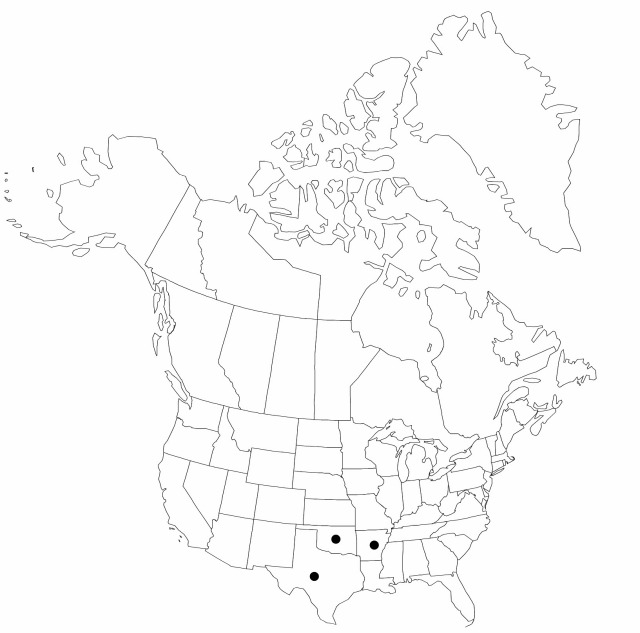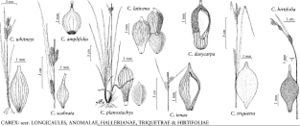Carex planostachys
Suppl. Riedgräs., 138, plate 35. 1844.
Plants loosely cespitose; rhizomes stout. Culms to 30 cm, short and long stems on same plant, scabrous. Leaf blades V-shaped in cross section when young, 1–2.5 mm wide, margins revolute, papillose, scabrous. Inflorescences: proximal bracts usually with sheath 2–5 mm; lateral spikes 5–11 × 3–4 mm, usually 1–2 distal and several basal; terminal spike 8–13 × 1.5–3 mm. Pistillate scales 5–7-veined, ovate, 4–4.5 × 1.5–2 mm, proximal ones longer than perigynia, apex acute to acuminate or mucronate. Staminate scales 5-veined, 4–5 × 1.5–2 mm. Perigynia 12–24-veined, veins on faces not more than 0.1 mm wide, most distinctly narrower than marginal veins, obovoid, 3–4.5 × 1.5–1.9 mm, puberulent; beak distinct, straight or slightly bent, 0.3–0.6 mm. Achenes subsessile, usually with 2 faces concave, 2.4–2.5 × 1.5–1.7 mm, apex obtuse to truncate.
Phenology: Fruiting late spring.
Habitat: Dry to mesic forests and scrub, on calcareous soils
Elevation: 200–700 m
Distribution

Ark., Okla., Tex., e Mexico, Central America (Guatemala).
Discussion
Reports of Carex planostachys from Arizona are referable to C. lativena.
Selected References
None.
